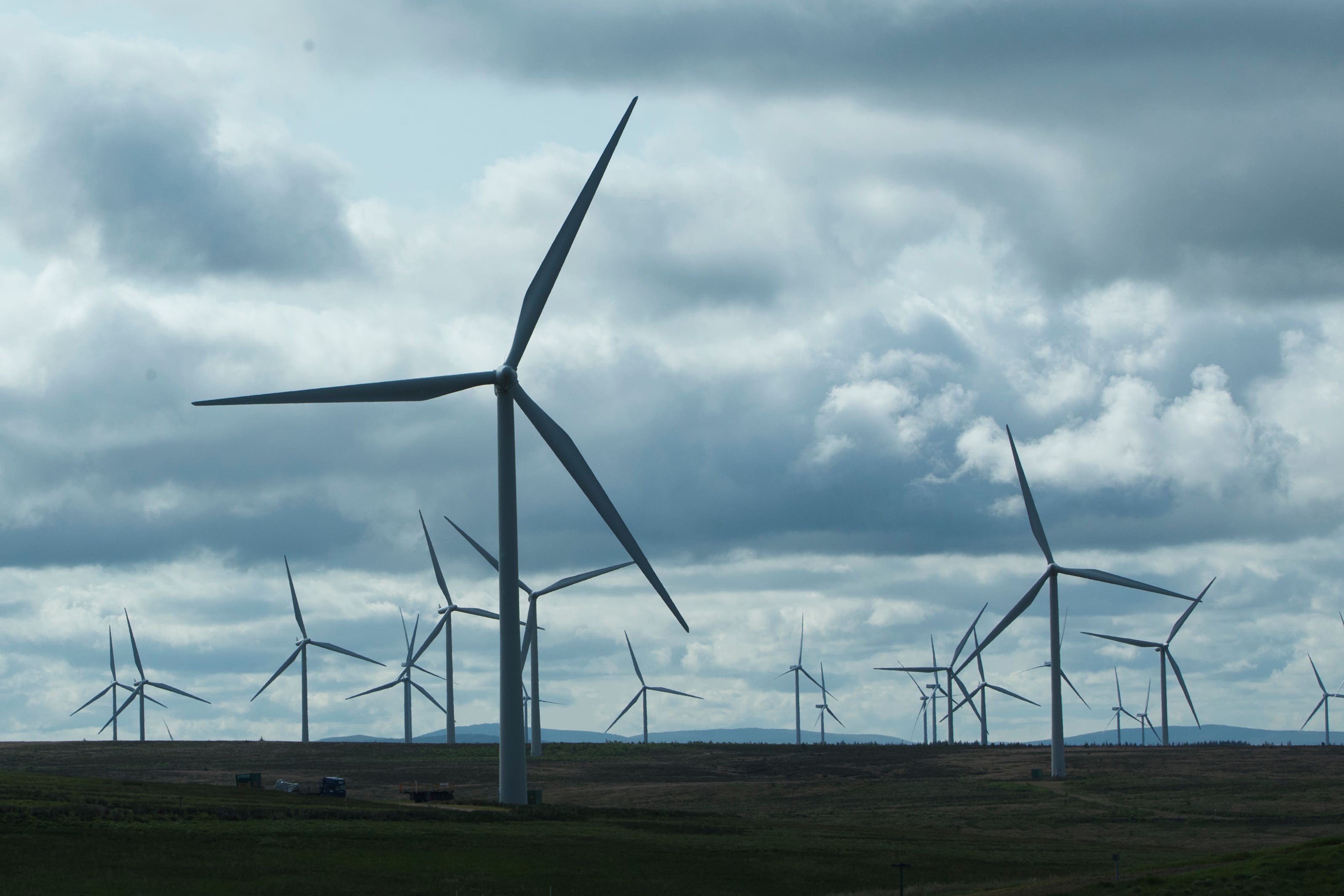Developer plans England’s biggest onshore wind farm near Manchester
The 21-turbine site could create enough electricity to power 100,000 homes, and comes after Labour reversed a de facto onshore wind farm ban.

Your support helps us to tell the story
From reproductive rights to climate change to Big Tech, The Independent is on the ground when the story is developing. Whether it's investigating the financials of Elon Musk's pro-Trump PAC or producing our latest documentary, 'The A Word', which shines a light on the American women fighting for reproductive rights, we know how important it is to parse out the facts from the messaging.
At such a critical moment in US history, we need reporters on the ground. Your donation allows us to keep sending journalists to speak to both sides of the story.
The Independent is trusted by Americans across the entire political spectrum. And unlike many other quality news outlets, we choose not to lock Americans out of our reporting and analysis with paywalls. We believe quality journalism should be available to everyone, paid for by those who can afford it.
Your support makes all the difference.England’s biggest onshore wind farm could be built in Greater Manchester after a clean energy company announced plans to put up 21 turbines.
The site to the north of Manchester could create enough electricity to power 100,000 homes before the end of the decade.
Cubico, the company behind the project, said it plans to invest £200 million to get the wind farm up and running by 2030.
It would be England’s first major onshore wind development in years after a de facto ban was reversed by Labour earlier this year.
The previous rules, put in place in 2015 by the Conservatives, meant onshore wind was treated differently from other developments, with schemes stopped from going ahead if there were any objections.
We’re encouraged by the Government’s vision to accelerate the build-out of renewable energy infrastructure across the country, and we are committed to delivering projects that decarbonise our power system, enhance energy security, and benefit local communities
The scheme will go out to the public for consultation this month before eventually being put in front of local planning authorities.
Labour has said it wants to decarbonise the UK’s power system by 2030, in plans which were described as a “huge challenge” but “achievable” by the grid operator on Tuesday.
The target would involve doubling onshore wind capacity, tripling solar energy and quadrupling offshore wind capacity from where it is now.
The development at Scout Moor would be a boost to the Government’s hopes of hitting the goal, adding about 100 megawatts to the UK’s clean energy capacity.
It would be the fifth largest onshore wind farm in the UK, with the other four being in Scotland.
But while Scotland generally has better conditions for wind power generation, constraints relating to the grid mean projects often cannot deliver power to sites in England.
The developer’s CEO, David Swindin, said the plan “reflects our strong confidence in the UK renewables sector and Britain’s potential to become a global clean energy powerhouse”.
“We’re encouraged by the Government’s vision to accelerate the build-out of renewable energy infrastructure across the country, and we are committed to delivering projects that decarbonise our power system, enhance energy security, and benefit local communities.”
Cubico is one of the world’s largest privately owned renewable energy developers, and is backed by the Ontario Teachers’ Pension Plan and PSP Investments, one of the largest investment managers in Canada.
Separately, the Welsh government gave planning permission for a 92-megawatt wind farm near Caerphilly on Tuesday.
The scheme, called Twyn Hywel, has 14 wind turbines, and is set to be finished in 2027.
The developer, Bute Energy, has 16 wind projects across Wales in the works – this is the first.